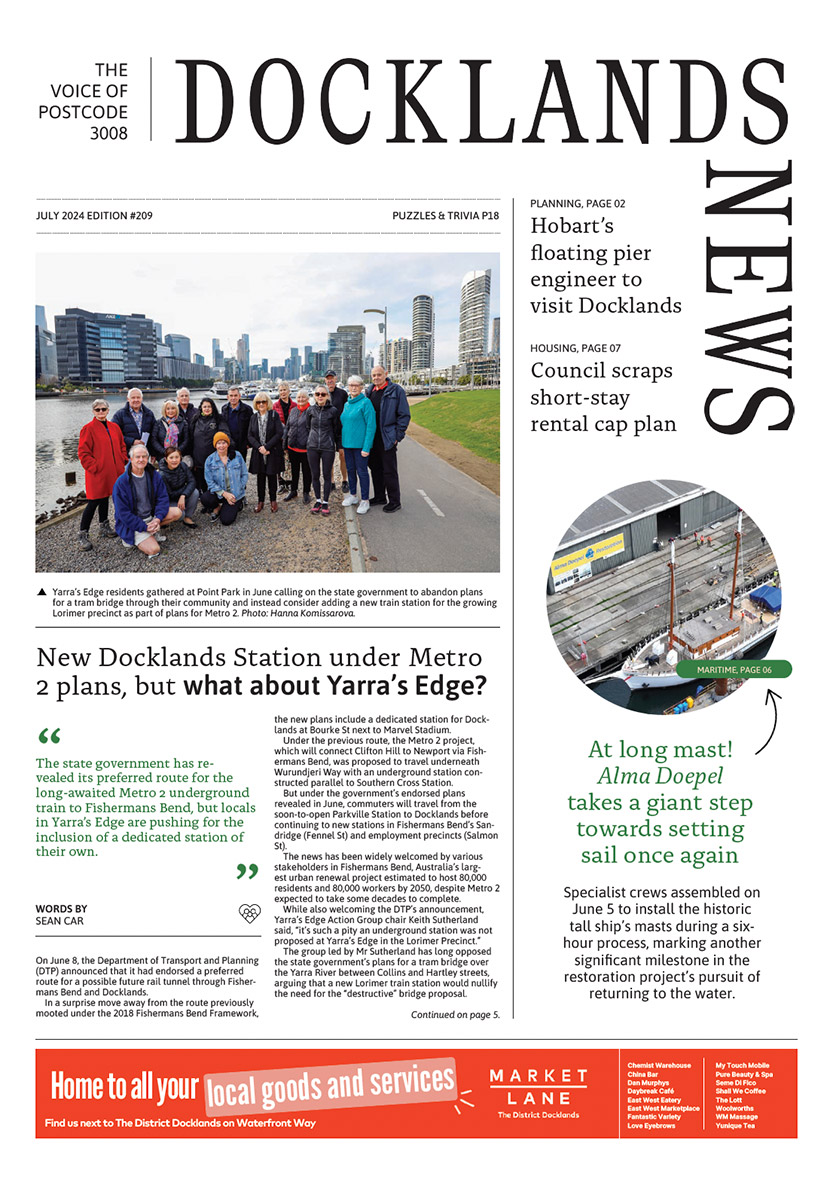The missing fine grain
Melbourne’s Docklands has many events that bring buzz and large crowds, but everyday street life tends to lack the vitality that high-density neighbourhoods can have.
If there is a key structural reason for this, it is the lack of fine-grained architecture and urban design.
It has been long established by the American urbanist and journalist Jane Jacobs that there are four key pre-conditions for urban vitality: a mix of uses that attract people at different times – or simply put, a “functional mix”; short blocks that enable easy walkable access through the neighbourhood – or “permeability”; sufficient concentration of buildings and people – or “density”; and a mix of new and old buildings – or a “fine grain” property structure that enables social diversity.
Victoria Harbour and NewQuay tick the first three pre-conditions, but mostly fail on the fourth – they lack “fine grain”. This is in part due to the ambition in the 1990s to redevelop a very large area within a short time, leading to land sales in large chunks – a hectare or more at a time. It led to homogeneity of built form and a lack of opportunity for residents to express themselves, or for their small entrepreneurial endeavours to develop.
The current demolition of Central Pier further aggravates this. It was a distinct structure with tall internal spaces, a mix of uses, and a wood and steel materiality that enriched the sensory experience of the place. The street activation the pier provided for Harbour Esplanade has been a significant loss since it was cordoned off in 2019. Its demolition can become a long-term loss of a pocket of finer-grain diversity.
In contrast stands the latest large-grain development proposal around the Stadium by Development Victoria. It is the opposite of what Docklands needs if it is to become a thriving neighbourhood. The proposed large monolithic structures would not increase diversity and would not add vitality. Such proposals may have been accepted in the 1980s but are seen as anachronic in the 21st century.
Now that the demolition of the pier is under way, let’s consider some scenarios for the future. Isn’t it a prime site for many Docklanders’ desires: a public pool, affordable housing, a bakery, a wine cellar, a fish & chip shop? A survey of residents would likely add hundreds of more desires. If each is kept small, then many of these could fit on one site.
What if the now inevitable redevelopment of Central Pier would be done differently than the antiquated “business as usual”? Maybe integrating a dozen or more desired functions, with separate ownerships and control, allowing continuing adaptation and differentiation. That would also orientate these towards the street and the water, rather than towards yet another internalised foodcourt.
The redevelopment will be also an opportunity to improve connectivity between Victoria Harbour and NewQuay, which is key for harnessing the potential synergies between the various parts of Docklands. It could significantly contribute to making Harbour Esplanade more walkable and lively, with “eyes on the street” throughout the day, and safe for all, including children.

For the above to happen, local residents and businesses should be engaged, and the public debate about possible futures would have to shift from ad-hoc singular proposals to a spectrum of scenarios proposed by, for and to the public. This could be enabled by open design competitions, such as for the old Flinders Street Station or Federation Square. While the pier is of high relevance for being at a bottleneck, the same principle of increasing “fine grain” can apply elsewhere too. Not just the undeveloped sites, but many of the under-utilised public or private lands could contribute towards finer grain diversity.
Enabling excess car-parking to be used for different functions on a temporary basis, is one opportunity. Issuing free permits for small temporary stalls along Harbour Esplanade is another. The free lease of land for a florist kiosk in front of Melbourne Town Hall has been a trigger for the now globally celebrated transformation of a mono-functional CBD to a buzzing city centre.
Docklands as a mixed-use suburb is more than three decades old, and it is time for some self-reckoning of this maturing process. Is time to shift from quantitative to qualitative growth. Paradoxically that means recovering and reproducing some of the fine grain that’s been lost. •
Dr Elek Pafka is a senior lecturer in urban planning and urban design at the Faculty of Architecture, Building and Planning at the University of Melbourne.

New Docklands Station under Metro 2 plans, but what about Yarra’s Edge?








 Download the Latest Edition
Download the Latest Edition